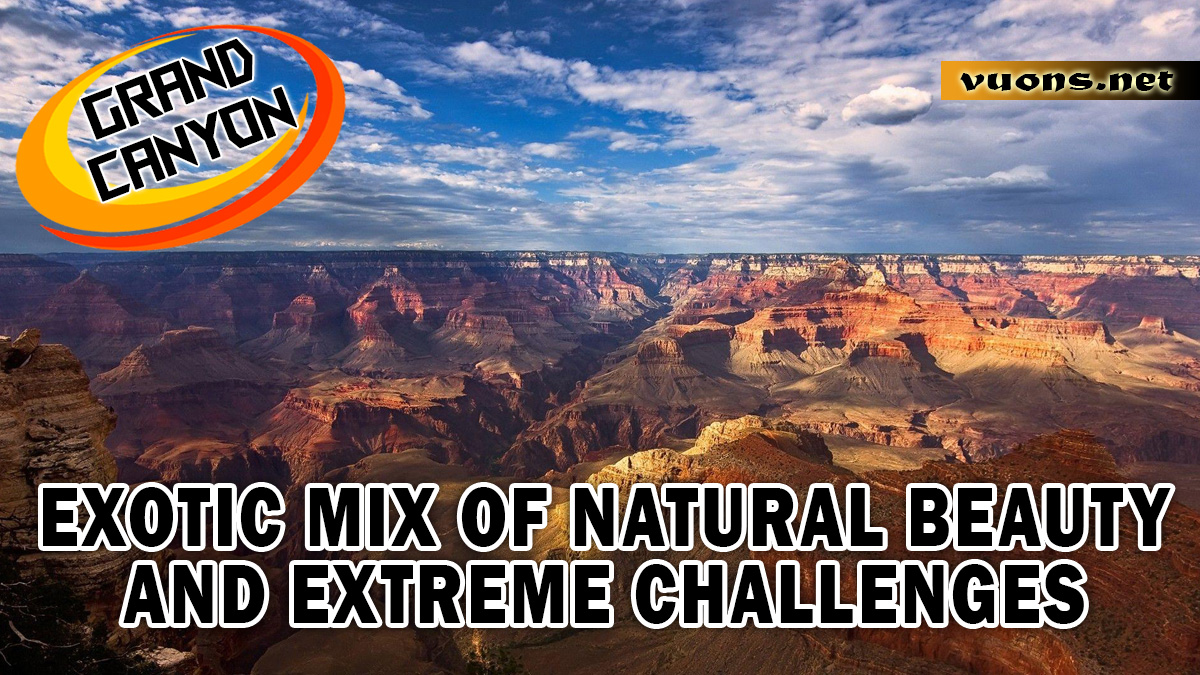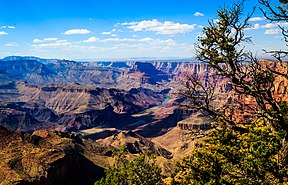Little Known Secrets of the Grand Canyon
Hidden Trails: Adventures Off the Usual Tourist Route
The Grand Canyon is one of the indisputable natural wonders of the world. With stunning views and a rich geological history, it is a dream Destination for many adventurers. However, behind the popular tourist routes, hidden paths less traveled, offering a more immersive and challenging experience for those who dare to explore them.
Hidden Paths: Adventures Off the Usual Tourist Route invites you to leave the crowds behind and discover another side of the Grand Canyon. These trails, although more difficult to access, offer tranquility and unspoiled views for many tourists. Here, you will find pristine natural beauty, from unique rock formations to rarely seen flora and fauna.
One trail that attracts adventurers is the Thunder River Trail, which takes you through a rugged landscape with dramatic views and access to a stunning underground river. Other trails, like the North Bass Trail, offer a quieter ride, with greater terrain challenges, but with the reward of incredible views and a deep sense of accomplishment.
Exploring these hidden trails not only provides an opportunity to see the Grand Canyon from a different perspective, but also to feel a deeper connection to nature. Prepare yourself well, because this adventure requires stamina, navigation skills, and adequate supplies. By exploring this hidden part of the Grand Canyon, you’ll take home more than just beautiful photos, but also a world-changing experience about the beauty of nature and the resilience of humanity.
Mysterious Caves: Exploring the Hidden Caves in the Grand Canyon
The Grand Canyon, with its majestic natural beauty, holds more than just stunning views. Behind its towering cliffs, there are hidden secrets waiting to be discovered: mysterious caves that are still rarely explored. Mysterious Caves: Exploring the Hidden Caves of the Grand Canyon opens the door to an underground world rich in history and unexpected natural beauty.
The caves at the Grand Canyon are not just ordinary rock formations; they are a gateway to the past. Some of these caves hold ancient artifacts and remnants of life from thousands of years ago, providing insight into how ancient civilizations survived in these harsh environments. Additionally, these caves are also home to a unique ecosystem that thrives in perpetual darkness, offering a contrasting view to the desert landscape above.
Exploring the hidden caves of the Grand Canyon is a challenging but very satisfying experience. Each step takes you deeper into nature’s secrets, where stalactites and stalagmites create an almost magical view. In the darkness, you may find clear water flowing through the cave floor, creating a soothing sound and reminding us of the forces of nature that continue to work, even though unseen.
This adventure requires courage and preparation, as many of the Grand Canyon’s caves have not been fully mapped or explored. However, for those who dare to take on this challenge, the reward is an experience very different from that offered by the usual tourist routes. Exploring these mysterious caves gives you the opportunity to truly be at one with nature and discover a little-known side of the Grand Canyon.
Mysteries of Hidden Waterfalls: Beauty Rarely Explored
The Grand Canyon is a stunning place with vast and deep views, but there are still many secrets hidden behind its giant canyons. One of the natural wonders that is rarely explored is a hidden waterfall that offers beauty that not many tourists know about. Hidden Waterfall Mysteries: Unexplored Beauty invites you to discover the amazing but often overlooked side of the Grand Canyon.
These hidden waterfalls are usually located far from the main routes, hidden in canyons that can only be reached by those who dare to explore deeper. One of the most famous but still relatively quiet waterfalls is Havasu Falls, with turquoise water that contrasts with the surrounding red rocks. Its unexpected natural beauty makes it a hidden gem worth exploring.
However, there are many more hidden waterfalls waiting to be discovered. Many of these waterfalls only appear during the rainy season or after storms, creating a temporary but stunning sight. The uniqueness and beauty of these waterfalls lies in how they transform a normally barren landscape into a lush and vibrant oasis.
Finding hidden waterfalls in the Grand Canyon is no easy task, but the effort will be rewarded with an incredible experience. This adventure demands patience, physical endurance, and a desire to explore beyond the usual routes. However, for those seeking pure, untouched natural beauty, this hidden waterfall offers a deep and satisfying experience, revealing a side of the Grand Canyon that the world does not know much about.
Unique Natural Phenomena: Strange Geology and Weather at the Grand Canyon
The Grand Canyon is a natural wonder that has captivated people for centuries. In addition to its stunning beauty, it also harbors unique and often strange natural phenomena, making it a living laboratory for studying geology and weather. Unique Natural Phenomena: Geology and Strange Weather at the Grand Canyon reveals a little-known side of the canyon.
Geologically, the Grand Canyon is one of the most amazing sites in the world. Formed over millions of years through erosion by the Colorado River, the layers of rock visible on the canyon walls tell the story of the earth from a very ancient past.
However, the wonders of the Grand Canyon don’t stop with its geology. The weather in the Grand Canyon also has a very variable and sometimes strange nature. For example, the “cloud inversion” phenomenon is one of the most interesting, where thick fog fills the canyon to create the illusion of a sea of clouds below the visitor. This phenomenon usually occurs in winter when cold air is trapped at the bottom of the canyon, while warm air is above it.
Additionally, the extreme temperature variations between day and night in the Grand Canyon often surprise visitors. In summer, temperatures at the bottom of the canyon can reach over 40 degrees Celsius, while at night, the temperature can drop drastically, creating a sharp contrast.
Experiencing and understanding these phenomena provides a new perspective on how dynamic and complex the Grand Canyon is. Every layer of rock, every movement of clouds, and every change in temperature is evidence of the forces of nature at work, creating and changing one of the world’s most iconic landscapes.




